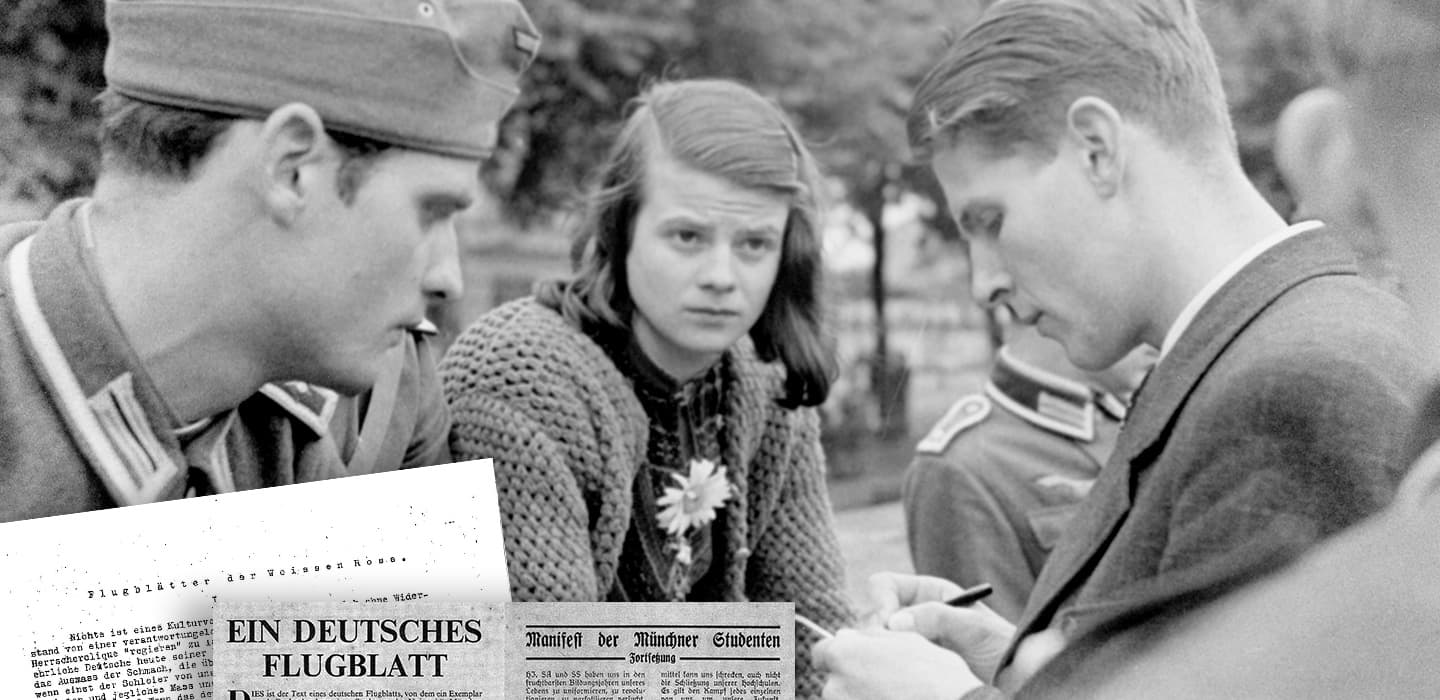On Feb. 18, 1943, two students at the University of Munich were arrested and taken into police custody. Hans Scholl, 25, and his sister Sophie, 22, were members of the White Rose, an underground anti-Nazi resistance group founded in 1942 by a handful of students at the University of Munich. The Nazis were committing genocide against the Jews and other “undesirables” in Germany and the parts of Europe it occupied. By discreetly placing anti-Nazi leaflets in public places across Germany, the group hoped to rouse people to action against Adolf Hitler’s totalitarian Nazi regime.
The courageous acts by the Scholls and others in their group—six ended up paying with their lives—only recently began getting attention in the U.S. And the account of their bravery during the darkest days of World War II (1939-45) offers lessons that are still relevant today, according to Annette Dumbach, co-author of the book Sophie Scholl and the White Rose.
“In a world filled with totalitarian tendencies,” says Dumbach, “[the White Rose] story is emblematic for people who fight back in the extreme moments of total state control.” She adds that their actions resonate with young people “who can identify with their struggle, their fumbling, their mistakes, their daring and courage even in the face of death.”
Hitler rose to power in the early 1930s at a time when Germany was in desperate shape (see Timeline). Its defeat in World War I (1914-18) and the harsh conditions imposed on it by the U.S., Britain, and France in the 1919 Treaty of Versailles—including enormous reparation payments to the victors—had left Germany humiliated and impoverished. Its economy only worsened with the worldwide economic depression that followed the 1929 stock market crash.
All this provided fertile ground for Hitler’s radical nationalist ideology. The Nazis (short for National Socialists) promised to stop reparation payments, give all Germans food and jobs, and make them proud to be German again. In 1930, Hitler’s party won 18 percent of the vote in parliament, effectively making it impossible to govern the country without Nazi support. To break the deadlock, President Paul von Hindenburg appointed Hitler chancellor (similar to prime minister) in January 1933.
Less than a month later, Hitler used a fire that destroyed the Reichstag, the parliament building in Berlin, as an excuse to declare a state of emergency and suspend democratic protections like freedom of speech. The Nazis began embedding the idea of a “master race” into the national psyche, elevating Germans to a genetic ideal they called “Aryan” and categorizing non-Aryans as “sub-human.”
Jews, in particular, became the prime scapegoats for Germany’s ills. In 1935, the Nuremberg Laws stripped Jews of their citizenship and political rights, expelled them from the army, and banned them from marrying people of “German blood.” Following two days of state-sanctioned violence against Jews in 1938 that came to be known as Kristallnacht (see box), Jews were banned from public places like universities and theaters and were eventually forced into ghettos.
Hitler’s plans extended beyond Germany and led to the start of World War II in 1939. In an effort to give the German people more “living space,” Hitler annexed Austria and Czechoslovakia in 1938 and 1939. His invasion of Poland in 1939 sparked an all-out war in Europe. By 1942 Germany occupied much of Europe, including France and a chunk of the Soviet Union (see map). Nazi persecution of the Jews was formalized as the “Final Solution,” a plan to systematically murder all of Europe’s 10.5 million Jews. (The Nazis also persecuted and killed millions of others, including Poles, Gypsies, homosexuals, Communists, and the disabled.)

